Best Machine Learning Use Cases Every Business Needs to Know
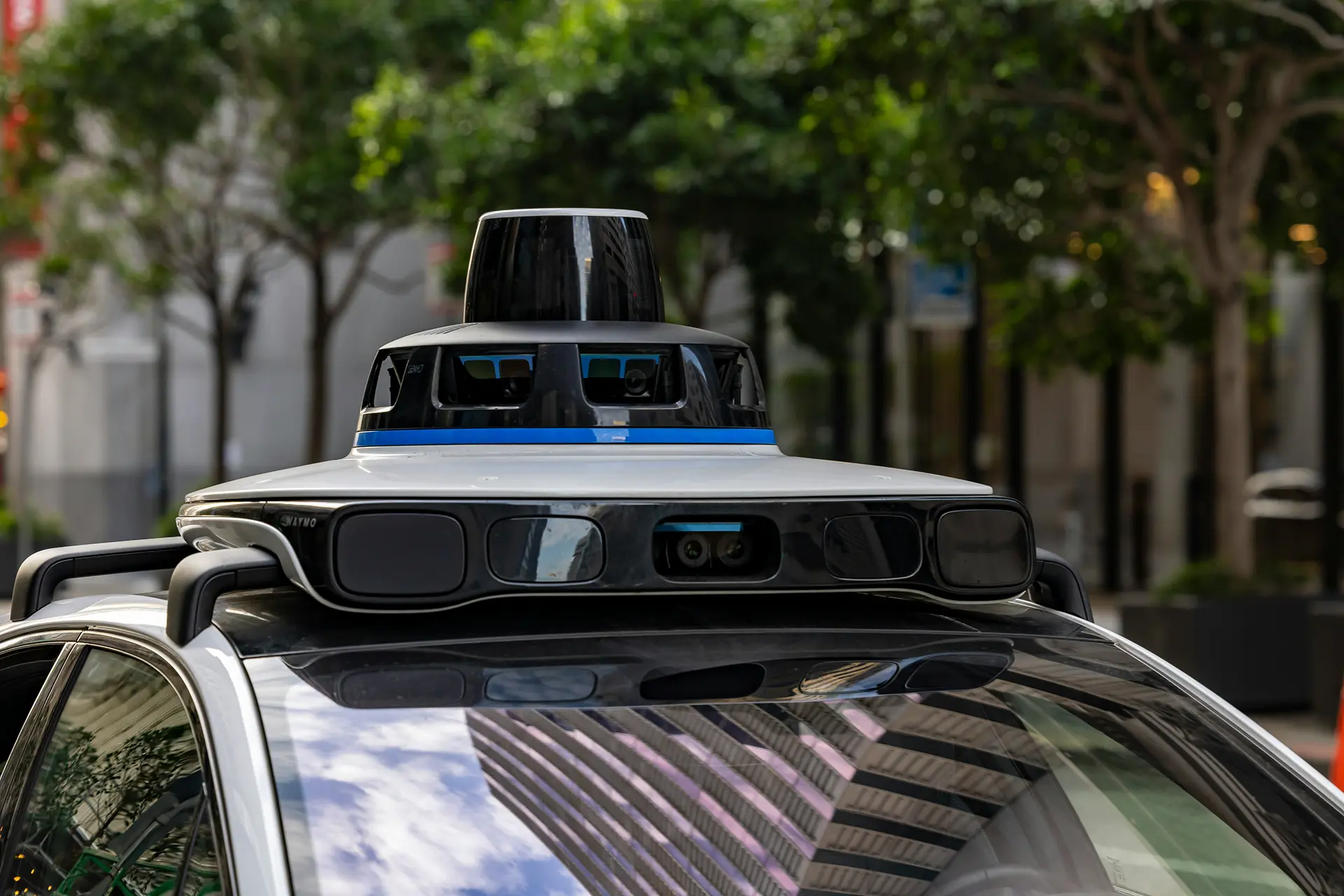
These days, machine learning (ML) is the hot topic in boardrooms, the star of tech conferences, and even your uncle’s latest Facebook post (seriously, Uncle Steve?). But amidst all the hype, its popularity soars among enterprises. Nearly 60% of companies have implemented ML technology, and 69% see it as a high priority for their organization, as Rackspace Technology survey states. Even so, a lot of businesses are still left wondering: How to find the right machine learning use cases that align with business goals, and where do I start?
Those are the right questions since technology adoption only because it’s trendy won’t solve your business problems nor drive real value. On a mission to help companies improve their processes through ML and AI development services, we at Relevant Software prepared an overview of a number of use cases for machine learning in different sectors. We’ll cut through the noise and share expert insights to help you identify machine learning applications that truly matter to your business.
What is Machine Learning?
In essence, machine learning (ML) is a computer program that learns and improves on its own. That’s ML’s killer feature. You don’t need to feed ML with rules to follow, you provide it with examples and let it figure out the patterns. That’s why the progress and effectiveness of machine learning techniques depend less on sheer computing power or flawless code and more on the quality of the data they are fed.
Every business generates massive amounts of data. But, not all data is quality data you can use for machine learning modeling. First, you should collect the right data relevant to the problem you want to solve with the help of ML. Irrelevant or noisy data can mislead the algorithm and lead to poor results. Second, collected data is often raw, messy, and unrefined, which means you should prepare and clean it for further use.
If you already use some business intelligence (BI) and analytics solutions to inform your decisions, you’re halfway there. It’s a much easier and more winning option for machine learning app development. Those who don’t just need to meet the first two criteria and also invest in the tools and processes for effective data management.
Types of Machine Learning
There are three main types of machine learning models, which are differentiated from each other by the approach used to teach ML systems. It’s worth noting that these machine learning techniques are applied to different purposes and applications.
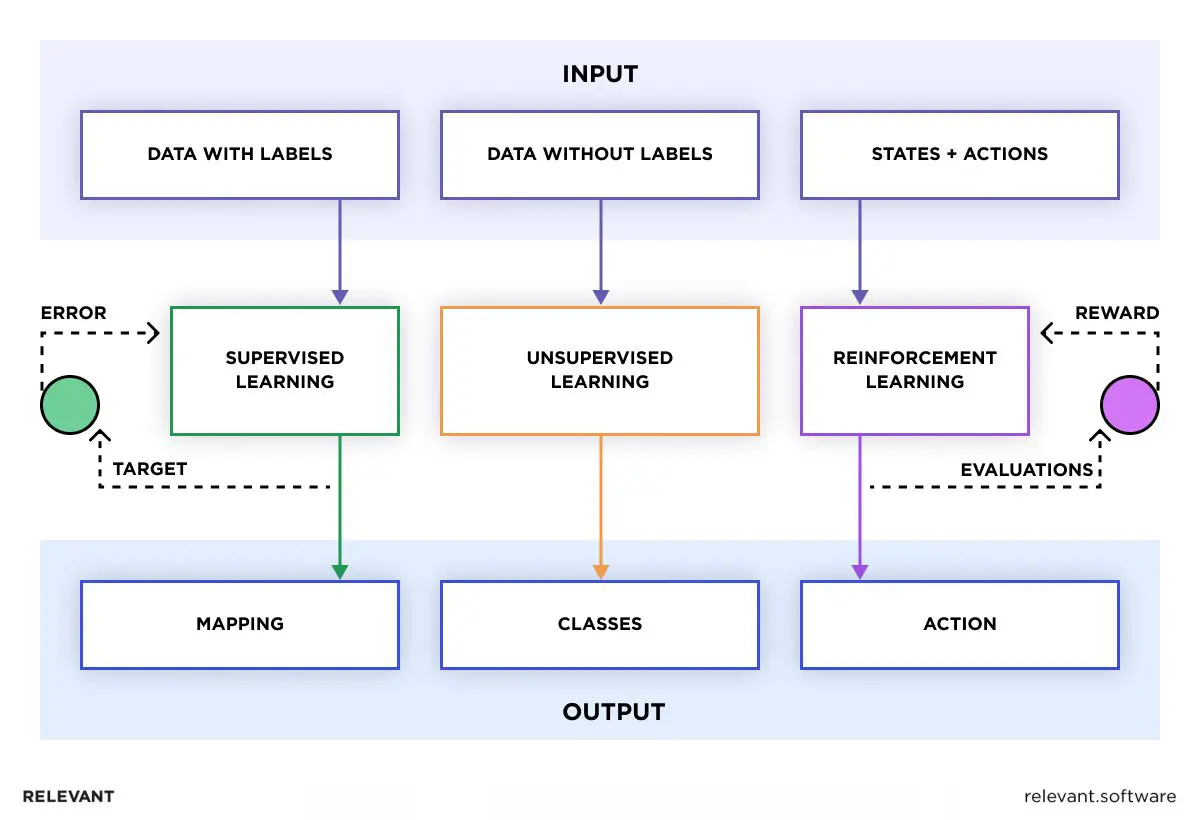
Supervised learning is an approach to teaching the algorithm with labeled data—examples paired with the correct answers. Over time, the algorithm learns the relationship between the data and the answers and can use that knowledge to predict the answers for new, unlabeled photos. For example, if you want a model to recognize cats in photos, you’d feed it thousands of pictures labeled “cat” and “not cat.” Usually, companies use this technique to train models to detect spam emails, recognize speech, or predict prices.
Unsupervised learning deals with unlabeled data, and the task of machine learning algorithms is to piece together the patterns and structures hidden within the data. Clustering or grouping similar items together is the most typical application of this technique. For instance, an algorithm trained with an unsupervised method may analyze customer data and segment them into distinct groups based on their purchasing behavior.
Reinforcement learning is the most interesting of the three approaches, where an algorithm interacts with an environment to get new knowledge. It receives rewards for desirable actions or penalties if it does wrong, and thus, ML learns to optimize its behavior next time under the same circumstances. This method is more often used in robotics, game playing, and autonomous vehicles – applications that require a series of complex decisions.
| Feature | Supervise learning | Unsupervised learning | Reinforcement learning |
| Training data | Labeled data (input-output pairs) | Unlabeled data | Feedback from the environment, rewards, and penalties |
| Objective | Predict output for new data | Find hidden patterns or structures in data | Maximize cumulative reward |
| Common algorithms | Linear Regression, Decision Trees, SVM, Neural Networks | K-means Clustering, Hierarchical Clustering, PCA | Q-Learning, Deep Q-Networks (DQN), Policy Gradients |
| Applications | Classification, regression, object detection, spam detection | Customer segmentation, anomaly detection, market basket analysis | Game playing, robotics, autonomous vehicles, dynamic resource allocation |
| Example use cases | Price predictions, Email filtering, Medical diagnosis | Market segmentation, Anomaly detection, Recommendation systems | Teaching robots to walk, autonomous cars, Playing chess against itself |
| Complexity | Moderate to high (due to the need for labeled data) | High (due to the need for sophisticated pattern recognition) | Very high (due to complex trial-and-error process) |
| Output | Predictive model | Groupings or associations | Policy or strategy for decision-making |
| Learning process | Learns from data examples | Hidden patterns discovery | Learns from actions and their outcomes |
| Strengths | Well-suited for tasks with clear goals and labeled data, High accuracy on well-defined problems | Useful for uncovering hidden patterns and insights in data, Can be applied to a wide variety of data types | Able to learn complex behaviors through trial and error, Can adapt to new environments |
| Weaknesses | Requires significant amounts of labeled data, May not perform well on unseen data | Difficult to interpret the results, Limited to finding patterns in the data itself | Can be computationally expensive, May take a long time to learn optimal behavior |
Machine Learning in Healthcare
We believe the healthcare industry has the most potential to gain from ML and deep learning applications. Firstly, it deals with really huge volumes of data (patient records, medical imaging, genetic information – the list goes on). Secondly, the sector has been relying on methods established decades ago for too long, and there are a lot of processes and workflows that need to be simplified or streamlined. So, it is no surprise that machine learning in healthcare has already brought positive outcomes for many hospitals. Let’s review the most prominent healthcare use cases for machine learning.

Disease Diagnosis
To accurately diagnose an illness, doctors need to learn a patient’s medical history and symptoms, order diagnostic scans, and interpret them. That’s a complex, time-intensive process in which a doctor’s mistake can cost a patient a lot. So, why not let a system be created to process massive data volumes and find correlations to help care providers make diagnoses? Here’s how exactly machine learning in healthcare can improve and speed up this complex process:
- Image recognition. ML algorithms can analyze X-rays, mammograms, and MRIs with remarkable precision and flag potential abnormalities that might be missed by the human eye. Trained on thousands of images, ML can easily detect cancer, heart disease, pneumonia, or brain tumors at early stages, which dramatically increases treatment success rates.
- Predictive analytics. The ML’s analysis of patient records (genetic information, lifestyle factors, and clinical history) can detect patterns and predict a patient’s risk of developing certain diseases. With this information, doctors can intervene early and prescribe preventative measures tailored to the patient’s specific risk factors.
- Personalized medicine. ML can find subtle connections between a patient’s unique genetic makeup, medical history, and potential treatment responses, which lets doctors develop more tailored treatment plans that will show more effective therapies and reduced side effects.
Drug Discovery and Development
Drug discovery has historically been a slow and expensive process that often takes years and billions of dollars to deliver a new drug to market. ML changes that narrative and accelerates the discovery and development phases in a few ways. Here are some machine learning examples that can:
- Identify drug targets. ML algorithms process massive datasets of biological information to identify potential targets for new drugs. Certainly, the technology can do it much faster than a group of researchers and pharmacologists who can save the time and resources needed to develop new medications.
- Simulate drug interactions. Through the ML model of potential drug interactions with the human body, scientists can now virtually test and refine drug candidates before costly clinical trials.
- Define patient stratification. ML makes it possible to determine specific patient populations most likely to benefit from a particular drug. As a result, everyone benefits from more targeted and effective clinical trials.
Related: Benefits of AI in healthcare
Machine Learning in Finance
The financial industry has been equally deeply affected by ML and AI technologies. The sector can be described as bureaucratic and complex, with traditional methods often slow and cumbersome. As a result, many machine learning use cases in banking emerged to help banks remove inefficiencies and increase customer satisfaction. Let’s see top machine learning use cases in finance and how they help financial companies automate certain processes.
Algorithmic Trading
We can compare the stock market to a high-speed race. Traders can’t always keep up with the rapid pace and vast amounts of data. So, they relied more on experience and intuition to trade. With machine learning for finance that can analyze market data and take into account all the factors that can influence prices, trading becomes more precise and strategic. Here are a few major machine learning use cases in finance that drive algorithmic trading:
- High-frequency trading (HFT). ML algorithms can react to market changes in milliseconds and execute trades at a speed unmatched by human capabilities. So, traders can capitalize on fleeting opportunities and minimize risks.
- Market prediction. Using historical data, news sentiment, and social media trends, ML models can predict future market movements, which can guide investment decisions and potentially lead to higher returns.
- Risk management. ML can identify patterns in fraudulent activities and market anomalies to help traders mitigate risk and protect investor capital.

Fraud Detection
Financial fraud is a persistent threat, but ML is a powerful weapon in the fight against it. Here’s how machine learning in finance can help banks and financial institutions protect their data and customers better:
- Anomaly detection. ML models are capable of scrutinizing thousands of transactions per second and flagging any unusual activity. For example, if a credit card is suddenly used in two different countries within minutes, an ML algorithm will mark this as suspicious and alert the fraud detection team. Even the most subtle signs of fraudulent behavior won’t go unnoticed by the ML system.
- Cybersecurity. The tactics of cybercriminals evolve at an unprecedented pace, and new types of fraud appear almost every day. The beauty of ML is that it can learn and recognize fraud it wasn’t trained to detect before. The ML’s ability to find unusual patterns helps it quickly understand the typical behavior associated with malicious activity and flag it for your team to investigate it further.
- Customer authentication is one of the popular machine learning use cases in banking. ML systems can examine a customer’s typical spending habits and login patterns. If there’s a deviation from the norm, it will indicate unauthorized access and let institutions take immediate action.
Machine Learning in Retail
The retail industry also undergoes a seismic shift driven by the power of ML. Just 5 years ago or so, it was hard to imagine an online shopping experience as personalized to individual preferences as it is today. But that’s far from being the only example of machine learning in retail. Whatever can be optimized or improved, ML will improve. Below, we outlined just a couple of reasons why machine learning outsourcing is a good idea if you have a retail business:
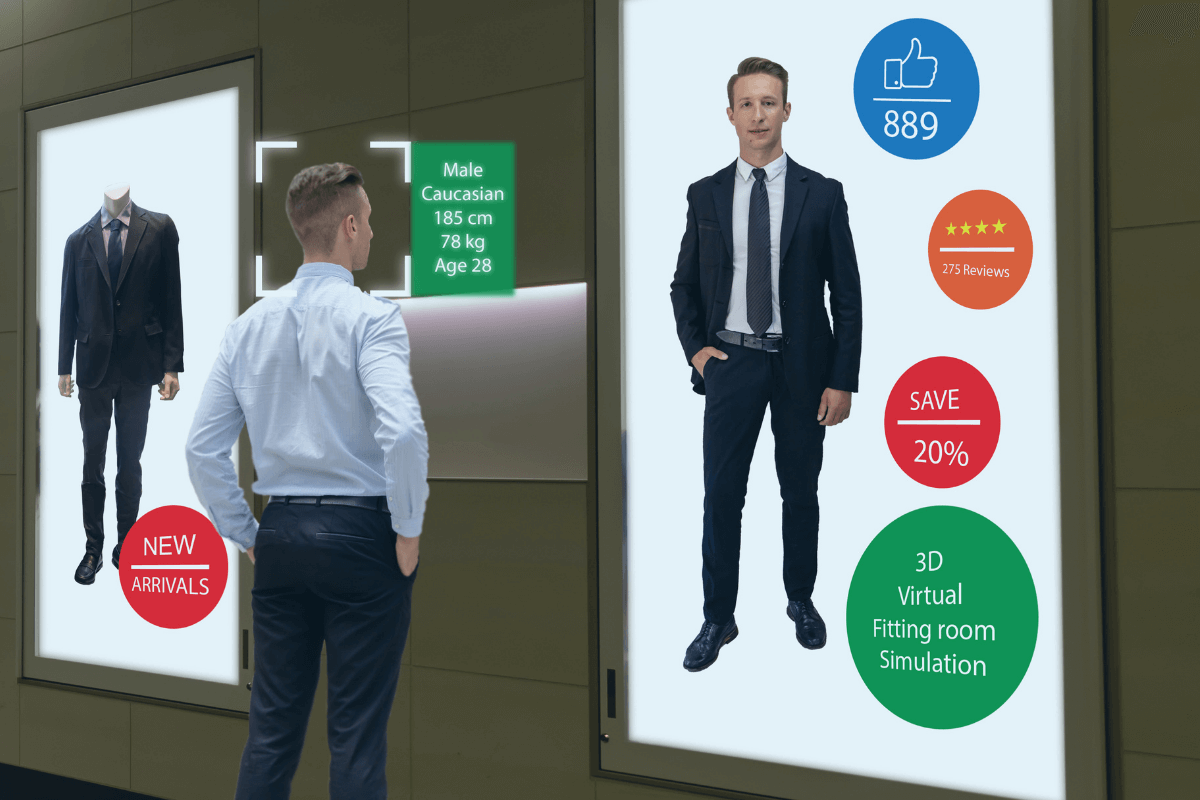
Personalized Shopping Experiences
Many online stores, big and small, turn to machine learning software development to create and deliver a truly personalized shopping experience for each customer. Sometimes, product recommendations and offers anticipate customer needs and pop up even before they realize they want them. Although it might be frightening to some extent, that’s essentially just the predictions made on the basis of customer browsing, past purchases, and social media activity.
Amazon is the undisputed king of personalization in e-commerce and has introduced new machine learning use cases. From the moment you log in, Amazon tailors its homepage to showcase products you’re likely to be interested in. From product recommendations on the homepage to “frequently bought together” suggestions, Amazon uses ML to anticipate customer needs and keep them engaged. Hyper customization also extends to marketing emails, special offers, and even landing pages.
Inventory Management
Retailers have long struggled with maintaining optimal inventory levels. Indeed, it can make or break a retail business. Too much stock ties up capital, while too little can lead to lost sales. Artificial intelligence can help you find the balance. Access to such data as historical sales, current market trends, weather forecasts, and other details helps ML predict demand extremely accurately.
For example, a retail chain can use ML to optimize its inventory levels across multiple stores. The algorithms can identify which products are likely to sell out quickly and which ones may languish on the shelves. Thus, you can ensure that each store has the right amount of stock at the right time.
Other artificial intelligence examples include automated stock replenishment and supply chain optimization. The use of ML solutions will help you spot bottlenecks and inefficiencies throughout the supply chain and factors that can potentially disrupt operations (transportation delays, supplier issues, unexpected shifts in consumer demand, and others). On top of that, it will help you optimize your logistic network and offer better ways to cope with unforeseen challenges.
Machine Learning in the Automotive Industry
It would seem that the automotive sector has nothing to do with data, but modern cars have software and multiple sensors embedded that generate skyrocketing amounts of data. That’s why ML implementation in the industry shows impressive benefits to vehicle design, development, maintenance, as well as the actual drive. Improved safety, customer satisfaction, and employee productivity are greatly facilitated by data-fueled machine learning applications. So, in what ways does ML drive automotive innovation?
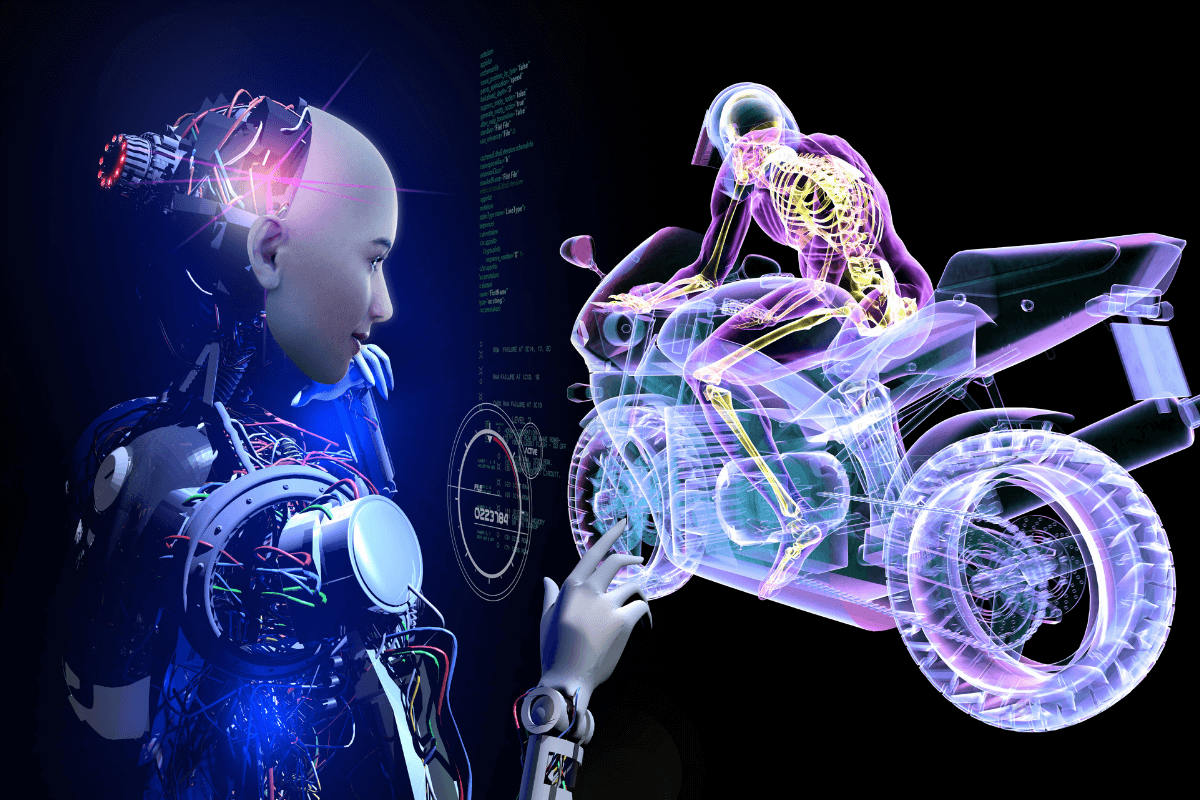
Autonomous Vehicles
The idea of self-driving cars once seemed like science fiction, but ML has made it a reality. More and more vehicles come equipped with advanced technology solutions to assist people drive safer and make better decisions on the road. Due to this, cars have become increasingly autonomous, connected, and smart. Such vehicles rely heavily on a complex set of technologies to operate, with ML being the major enabler:
- Sensor fusion. Autonomous cars have a multitude of sensors embedded (cameras, radar, LiDAR, and other inputs). ML algorithms are used to fuse data from these sensors and create a real-time, 360-degree perception of the car’s surroundings. In other words, it helps the car “see” the world around it and understand the positions of other vehicles, pedestrians, and obstacles.
- Decision-making. Once the car perceives its environment, machine learning algorithms analyze the sensor data and reference vast datasets of traffic patterns and road rules to decide what to do in a particular situation. As such, the ML system makes critical decisions—speed up, brake, or steer—to navigate the car safely and efficiently.
- Navigation and path planning. ML helps autonomous vehicles determine the most efficient and safest path to your destination. It can make real-time adjustments based on traffic, road conditions, and any other factors that may arise during the journey.
- Continuous learning. The key to a truly autonomous car is its ability to learn and adapt. An ML algorithm constantly updated with new data and experiences allows self-driving cars to continuously improve their performance and handle even unexpected situations.
Predictive Maintenance
Traditional maintenance schedules are often based on general guidelines and can be inefficient. ML takes car maintenance to a completely new level as it can predict when a vehicle will need service before a problem arises. Let’s figure out how it is possible.
Multiple sensors within the vehicle send information on the car’s status to help the systems monitor its condition in real time. ML then uses this data to find patterns that might indicate potential issues and predict when parts would fail or need servicing. For example, an ML system can alert drivers when brake pads are worn thin or when an engine component is likely to fail soon. Fleet operators, in particular, benefit from predictive maintenance as it lets them keep vehicles in optimal condition.
Machine Learning in Entertainment
Industry specialists from different fields, be it film production, game creation, or music composition, all agree that ML has a huge impact on the ways content is created, advertised, and distributed. We can safely say that the entertainment industry received a fresh shot of innovation thanks to artificial intelligence. Here are just some of the many machine learning use cases we want to review in detail.
Content Recommendation
Have you ever wondered how Netflix or YouTube always seems to know what you want to watch next? That’s ML’s work. Recommendation engines use ML algorithms to analyze users’ viewing habits, preferences, and even the time of day they watch certain types of content. This data is enough for an ML-powered system to make personalized suggestions. For instance, if a user binge-watches a lot of crime dramas, the platform that uses a recommendation engine will offer shows and movies in similar categories or suggest new releases in the crime drama genre.
Users don’t need to spend hours scrolling through endless options to find relevant content. Provided with several options that users are more likely to be interested in, they choose to watch the suggested content. As a result, stay longer on the platform and enjoy a smoother experience. As for the ML algorithm used here, the more a user watches, the smarter the recommendations get. Netflix, Amazon Prime, and Spotify have reached phenomenal results in this art and turned casual users into loyal subscribers.
Game Development
The world of video games has also been deeply affected by ML. Here’s how:
- Adaptive AI opponents. Game developers use ML to create smarter, more adaptive AI that can learn and respond to player behavior. Traditional AI follows a set pattern that makes enemies’ actions predictable after a while. But with ML, these characters learn from the player’s strategies and counteract them, which ensures a fresh challenge every time a gamer plays.
- Personalized game worlds. ML customizes in-game experiences to fit the gamer’s playstyle. For example, an exploration-focused player will be more satisfied to encounter more hidden secrets, while a combat-oriented player might enjoy battles with more challenging enemies.
- Compelling storylines. ML can even be used to craft dynamic storylines that react to your choices. The decisions you make throughout the game influence the narrative. So, each playthrough is unique for each player and will be different for the same player if they make different decisions. It’s truly engaging because the curiosity to learn what will happen with your character if you choose the alternative option will keep users coming back. No Man’s Sky and Minecraft successfully use such techniques to create a Choose Your Own Adventure experience within the game where you never know exactly where your choices will lead.
For more use cases and information, check our recent article on AI in entertainment.

Machine Learning in Manufacturing
Manual, blue-collar work in factories has been gradually replaced with machinery and robots. And ML injects intelligence into every stage of manufacturing, from initial design and prototyping to production and quality control. So, while robots take over the repetitive tasks, ML empowers factory workers with the tools to make better decisions and enhance overall productivity. There are a number of artificial intelligence examples in manufacturing intended to predict equipment failures and optimize production, which we discuss below.
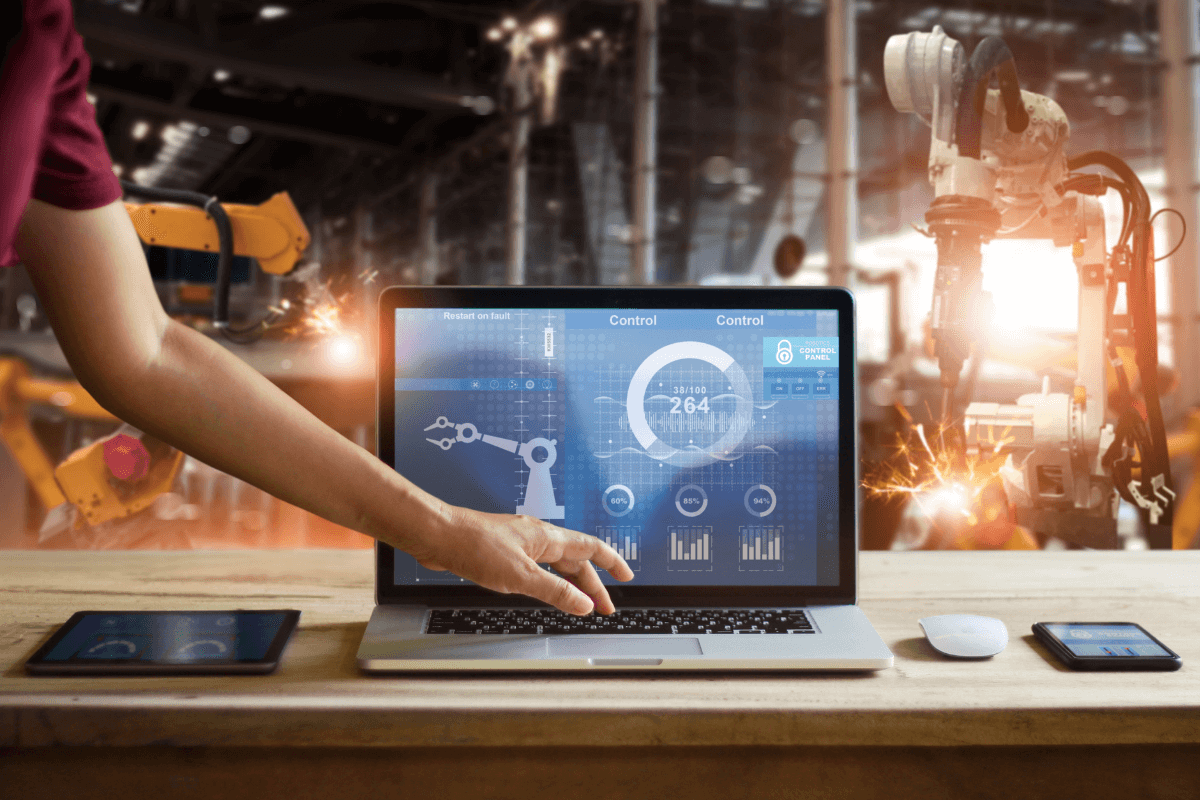
Process Optimization
With ML, a factory floor where every process is carefully fine-tuned for maximum efficiency is a reality. The data from production lines processed with ML algorithms will give you insights into bottlenecks your production may encounter, predict equipment failures, and recommend adjustments to optimize flow.
ML can suggest adjustments to machine settings, optimize worker assignments, reduce energy consumption, and schedule preventive maintenance at the most optimal time to avoid downtime – all with the goal of minimizing waste and boosting productivity. ML adoption allows manufacturers to achieve an incredible level of precision and efficiency. Doing more with less is possible, and artificial intelligence is key.
Quality Control
Maintaining consistent quality is paramount for any manufacturer that values its reputation. Manual inspections are good as inspectors, with their experience, can identify nuanced issues. But more often, they are time-intensive and prone to error, especially when you deal with high production volumes and microscopic imperfections. ML can enhance your quality control severalfold, as its ability to detect defects quickly and accurately is really impressive.
An ML-based system can analyze thousands of images per second and carefully inspect every product for the slightest imperfection. You can train ML algorithms to recognize a wide range of defects typical for your production (minuscule scratches, subtle variations in product dimensions, etc.). In addition to flawless products, a defect spotted at an early stage of product development allows you to prevent defective items from being created in the first place.
Supply Chain and Logistics Optimization
The success of any manufacturing operation depends on how well the supply chain is managed. Here too, ML has something to offer. Predictive analytics powered by ML can anticipate raw material availability and fluctuations in demand for a specific product weeks in advance.
Predictive analytics also lets you optimize inventory levels and improve logistics. Optimized supply chains mean you always have the right materials in stock at the right time. Delivery routes and schedules can also be improved and result in reduced transportation costs and faster delivery times. As you can see, ML usage in supply chain management lets manufacturers be more agile to market changes, reduce costs, and improve overall efficiency.
Machine Learning in Education
ChatGPT is an extremely popular AI-powered tool among students and teachers, as it can help write academic papers, conduct research, or assist with homework. ML applications offer another kind of support, but it’s equally impactful. Here are a few machine learning examples educational organizations can leverage beyond ChatGPT:

Personalized Learning
Imagine a classroom where each student progresses at their own pace, is challenged appropriately, and is supported effectively. This is the promise of adaptive learning powered by ML. Once the system learns about the strengths and weaknesses of a student from a student’s performance data, it adjusts the difficulty, suggests relevant content, and provides targeted feedback. For example, a student who struggles with a math concept might be offered an interactive visualization. Alternatively, they might receive different problem-solving approaches that would fit their preferred learning style.
Automation of Administrative Tasks
ML and AI were never intended to replace educators; they are rather powerful tools yet still tools that empower educators to do more and dedicate their time to teaching, not doing papers. Tedious administrative tasks, like multiple-choice quiz grading and attendance management, are easily automated with ML tools. Think of how much time can be saved! Educators can now spend more energy on what matters most. Knowledge from books is what students can get on their own, but teachers also help grow critical thinking skills, guide, and ignite a passion for learning.
Predictive Analytics in Student Performance
The ability to predict student performance is perhaps the most transformative aspect of ML in education. The analysis of students’ academic performance, learning styles, and extracurricular activities performed by ML will determine students who might fall behind generally or in certain aspects or those with hidden potential. Educators will be able to pinpoint a student who excels in science but struggles in writing and intervene to help them improve their writing skills. At the same time, they can nurture student strengths in science.
Machine Learning Use Cases: Bottomline
Each industry benefits from different machine learning use cases and can gain unimaginable opportunities. The ML applications we discussed only scratch the surface as they continue to evolve and new examples appear.
ML is an investment that grows alongside your business. It gains strength with every challenge, each customer interaction, or new data received. It’s the perfect formula for scalable businesses – the more the ML system works, the more potent it becomes. ML is also a very attractive solution as it’s highly adaptable to any process, particularly those rich in data. In the age of big data and automation, human teams physically can’t cope with the sheer volume and complexity of data. So, it turns out that it’s hard to survive and all the more grow for modern businesses without ML.
A decision to adopt new and complex technology like AI or ML may be scary because you don’t know where to start and may feel overwhelmed by the potential challenges and unknowns. In this regard, a partnership with a knowledgeable tech team is a wise choice that will ease your transition. At Relevant, we guide you through the initial steps, help identify the most impactful areas for ML implementation, and develop custom solutions that align with your business goals. Contact us to hire our AI engineers with experience to tackle real business challenges to get a smooth adoption process and meaningful results for your investment.



